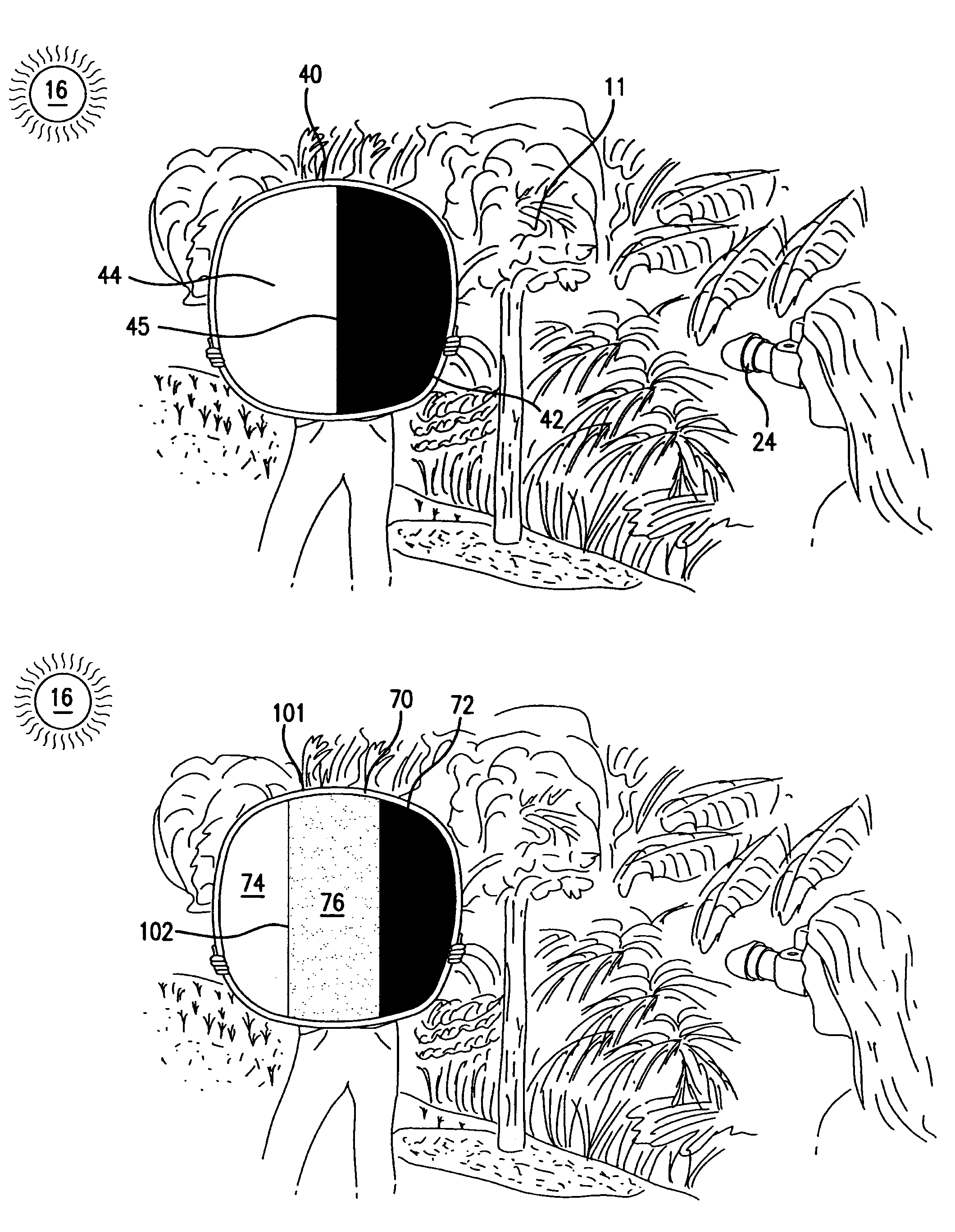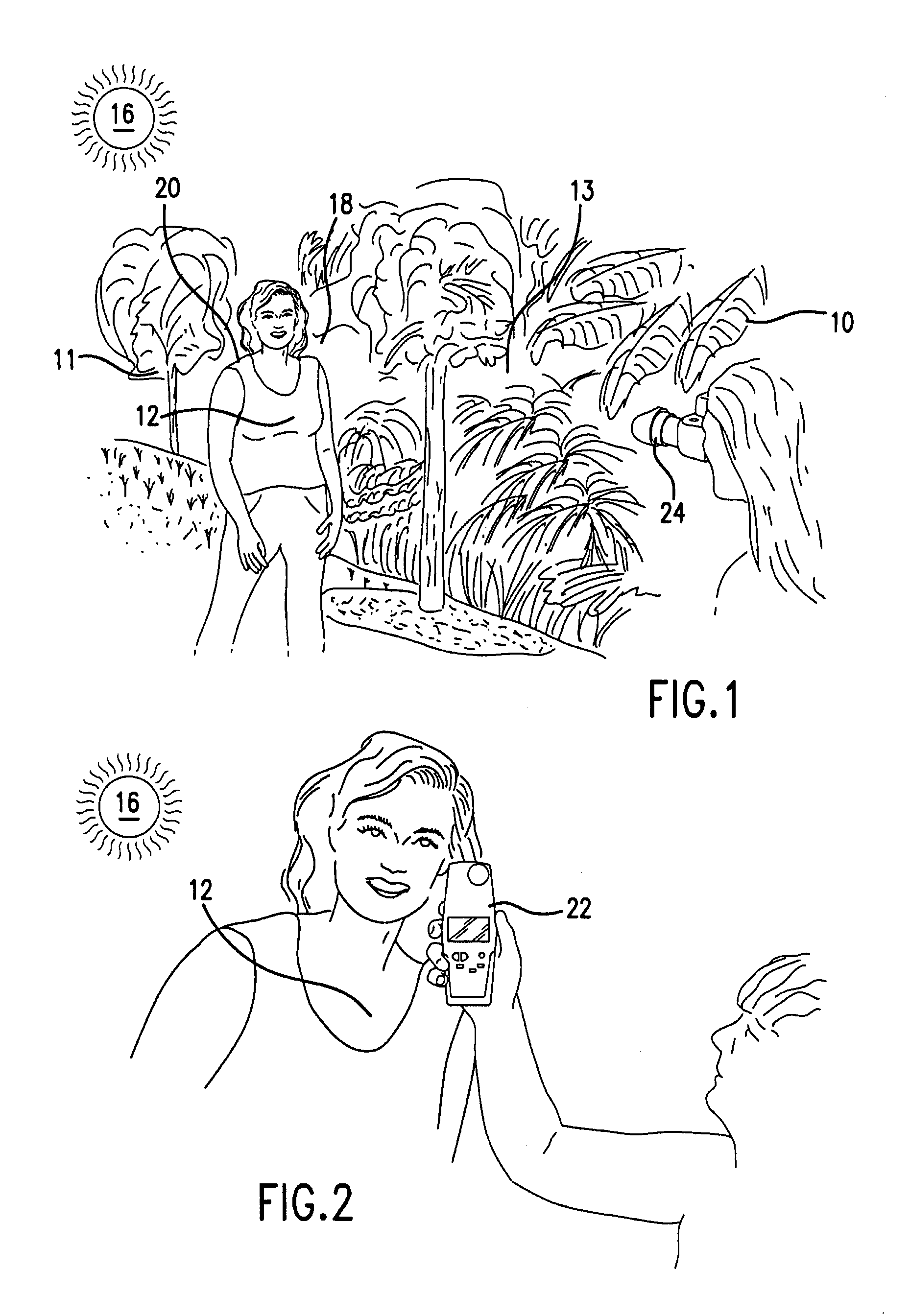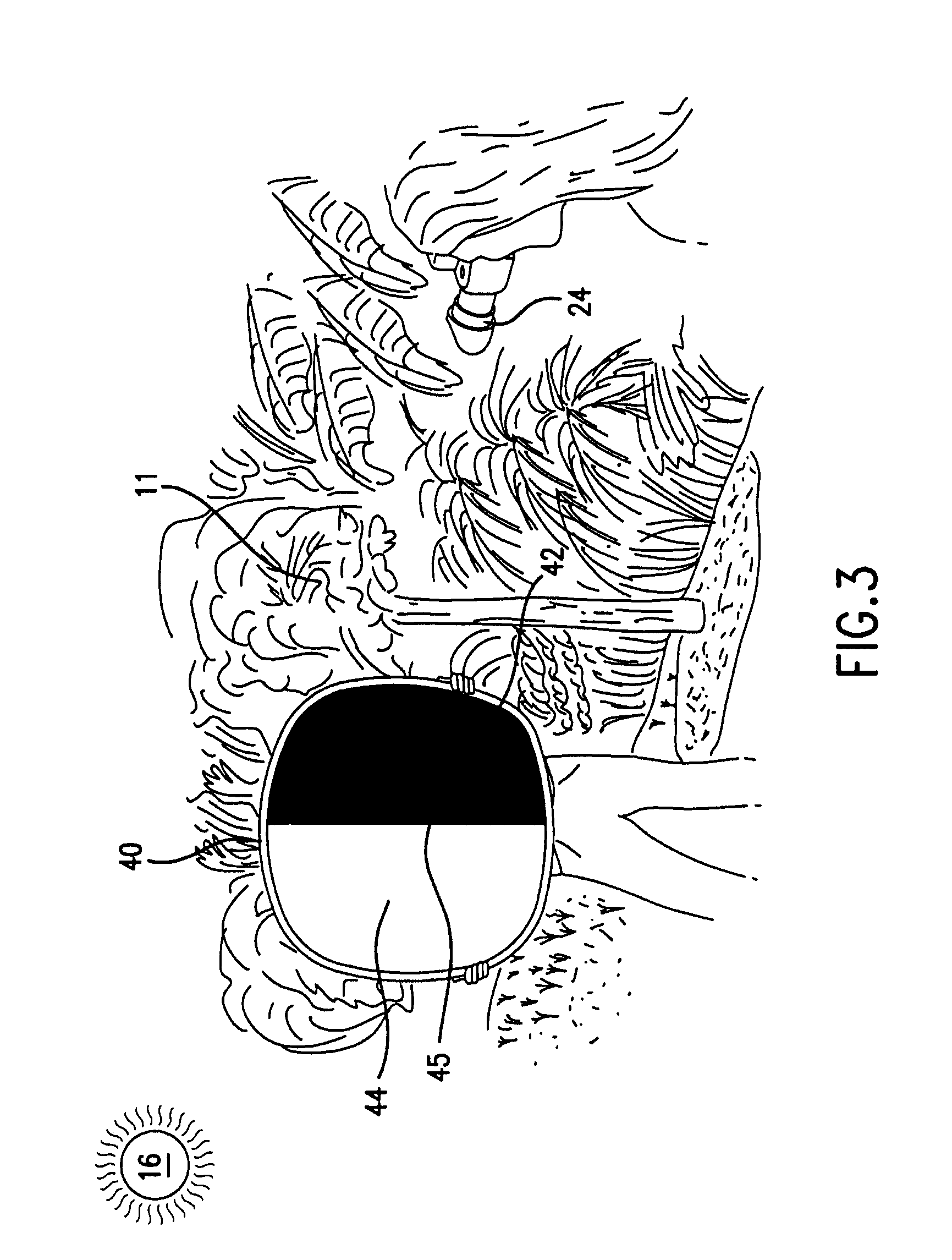Calibration targets for digital cameras and methods of using same
- Summary
- Abstract
- Description
- Claims
- Application Information
AI Technical Summary
Benefits of technology
Problems solved by technology
Method used
Image
Examples
Embodiment Construction
[0039]Referring now to FIG. 1 there is shown a location 10 at which an original scene 11 is disposed, which scene may include a subject 12 to be photographed and a background 13. The location 10 may be any location and the scene 11 may be any scene with any particular object 12, or no particular object. The background 13 may be any background. The scene 11 is illuminated by a light source 16, which may be any light source, for example, a lamp, the sun, a photo flash or indirect light, which illuminates the location 10 of the scene 11.
[0040]The scene 11 has shadows 18 and highlights 20. The shadows 18 and highlights 20 may be definite and readily apparent, or may be subtle. For any subject 12, the shadows and highlight are usually intermingled, varied and complex.
[0041]The subject 12 and background 11 also has colors and tones, which may vary widely and interact with highlights and shadows to produce a visual image of the original scene 11. A digital camera 24 having a lens, focuses ...
PUM
 Login to View More
Login to View More Abstract
Description
Claims
Application Information
 Login to View More
Login to View More - R&D
- Intellectual Property
- Life Sciences
- Materials
- Tech Scout
- Unparalleled Data Quality
- Higher Quality Content
- 60% Fewer Hallucinations
Browse by: Latest US Patents, China's latest patents, Technical Efficacy Thesaurus, Application Domain, Technology Topic, Popular Technical Reports.
© 2025 PatSnap. All rights reserved.Legal|Privacy policy|Modern Slavery Act Transparency Statement|Sitemap|About US| Contact US: help@patsnap.com



